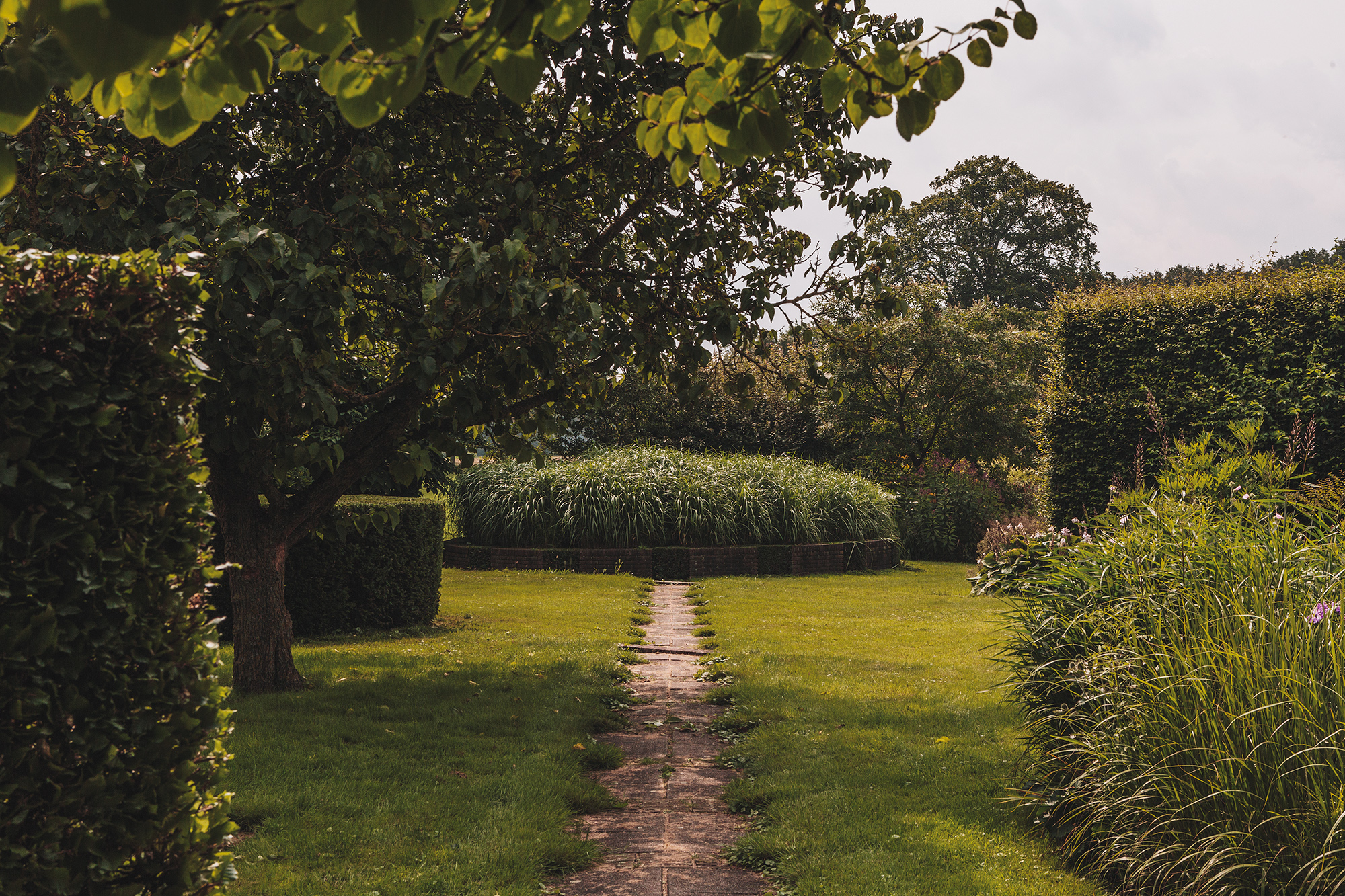
Piet Oudolf’s Gardens
Stars and flowers
On a dramatic summer’s day I accompany Piet Oudolf, garden architect, on a walk through the exuberantly blooming garden in Hummelo. Dark grey clouds gather overhead but remain a mere ominous presence for now.
The grey of the clouds contrasts beautifully with the colourful spectacle in which we are immersed: many shades of green, coral-shaped pink flowers, prickly bulbs with a purple sheen, bellflowers of a deep purple that resembles satin evening gowns, undulating grass in rusty hues, occasional dashes of yellow or orange. All around us insects fly from one flower cup to the next in search of pollen: bees, bumblebees, hoverflies. “It’s an interactive situation,” Oudolf says, “you do this with the plants in mind, but you get the whole ecosystem along with it.”
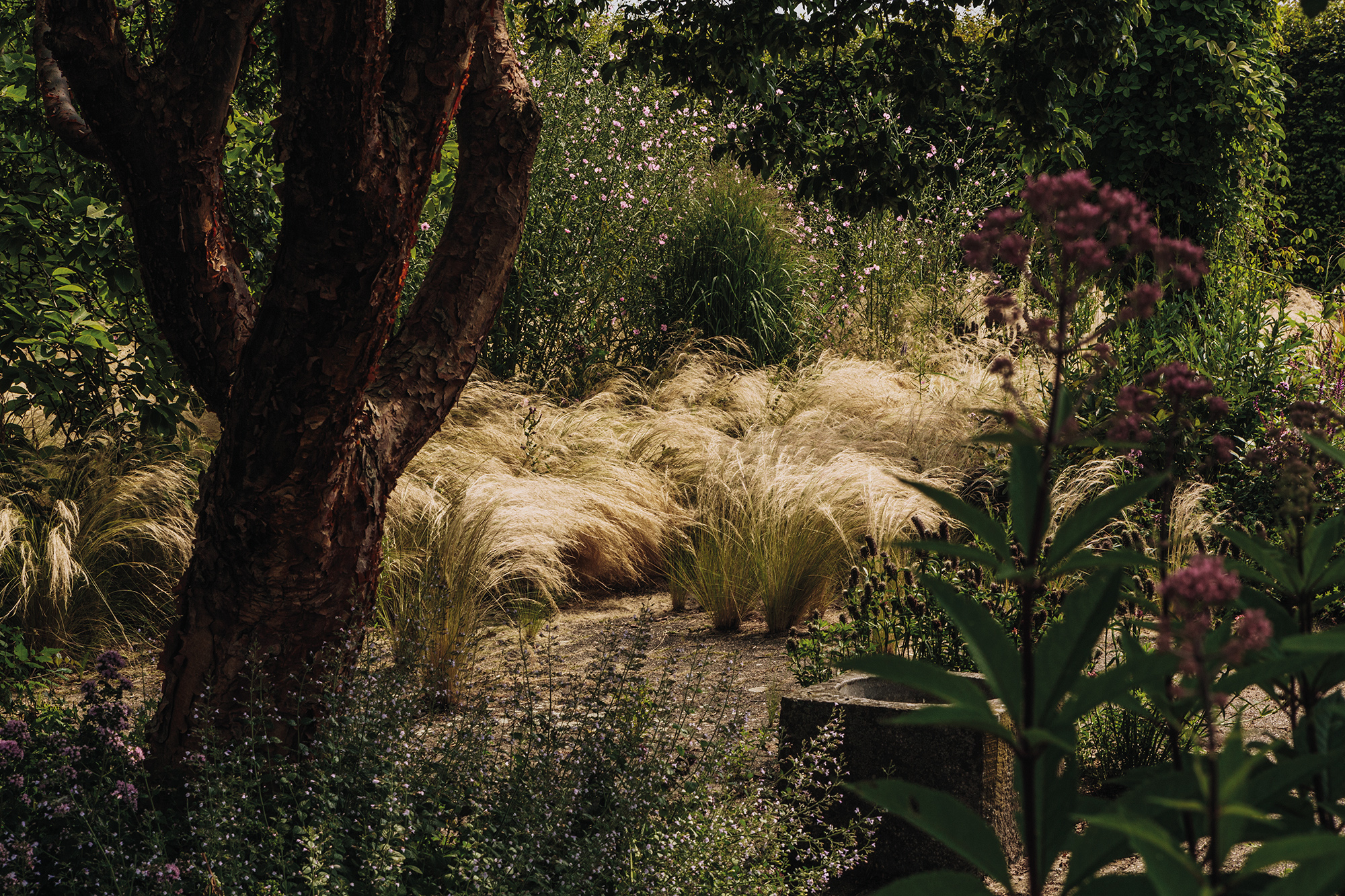
As we walk around, Oudolf gazes across his Eden. Now and again he tears something from the soil, root and all, but mostly he seems pleased with what he sees. “It’s just like writing,” he says,“‘you need to strike things out here and there, to make a better story.” This section of the garden is occupied by plant species you wouldn’t want in a home garden as they tend to take things over. Some call them weeds; they are welcome here. “Instead of needing to intervene too much,” says Oudolf, “we combine them with plants that aren’t so easily overpowered. Strong species that hold their ground alongside the usurers.”
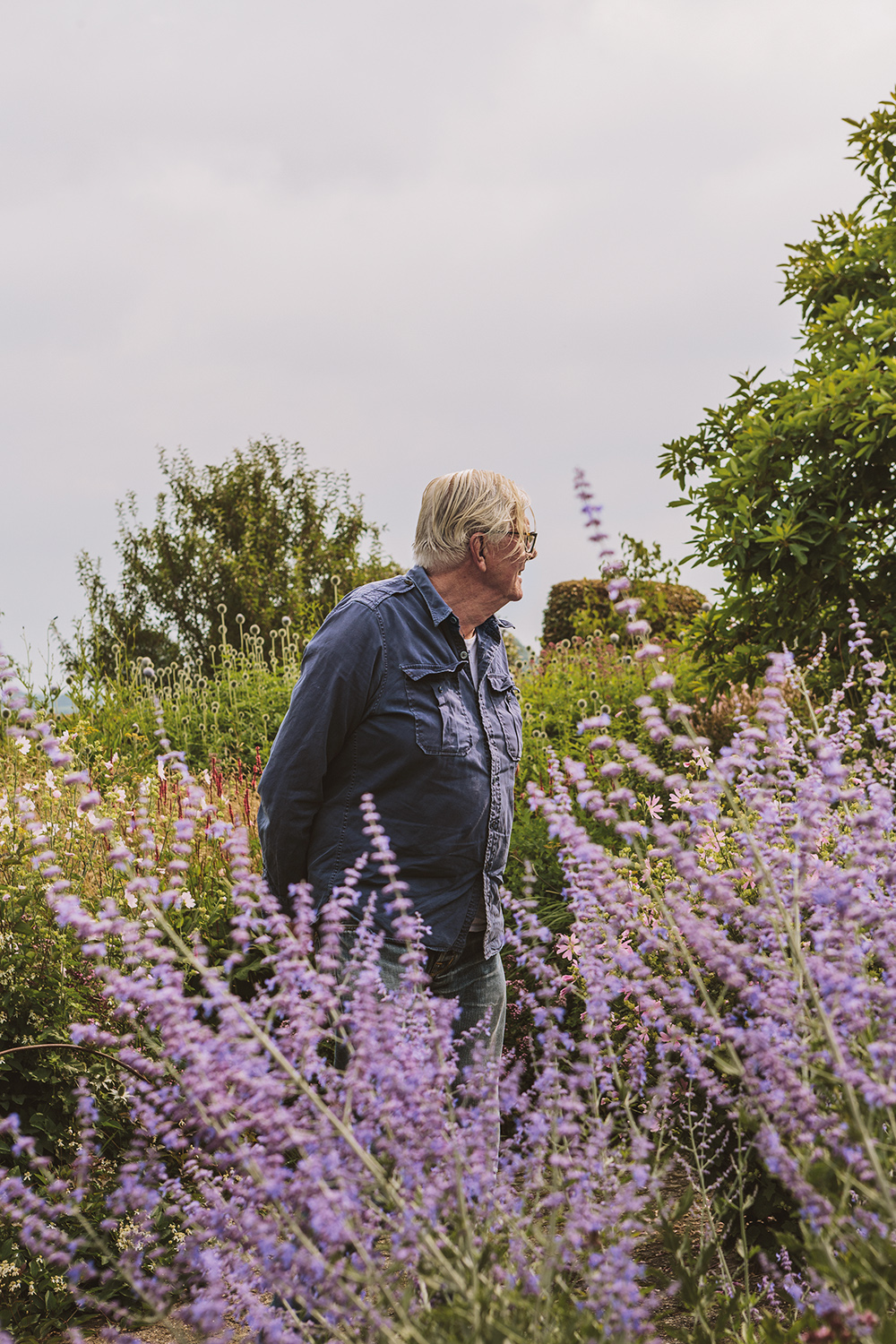
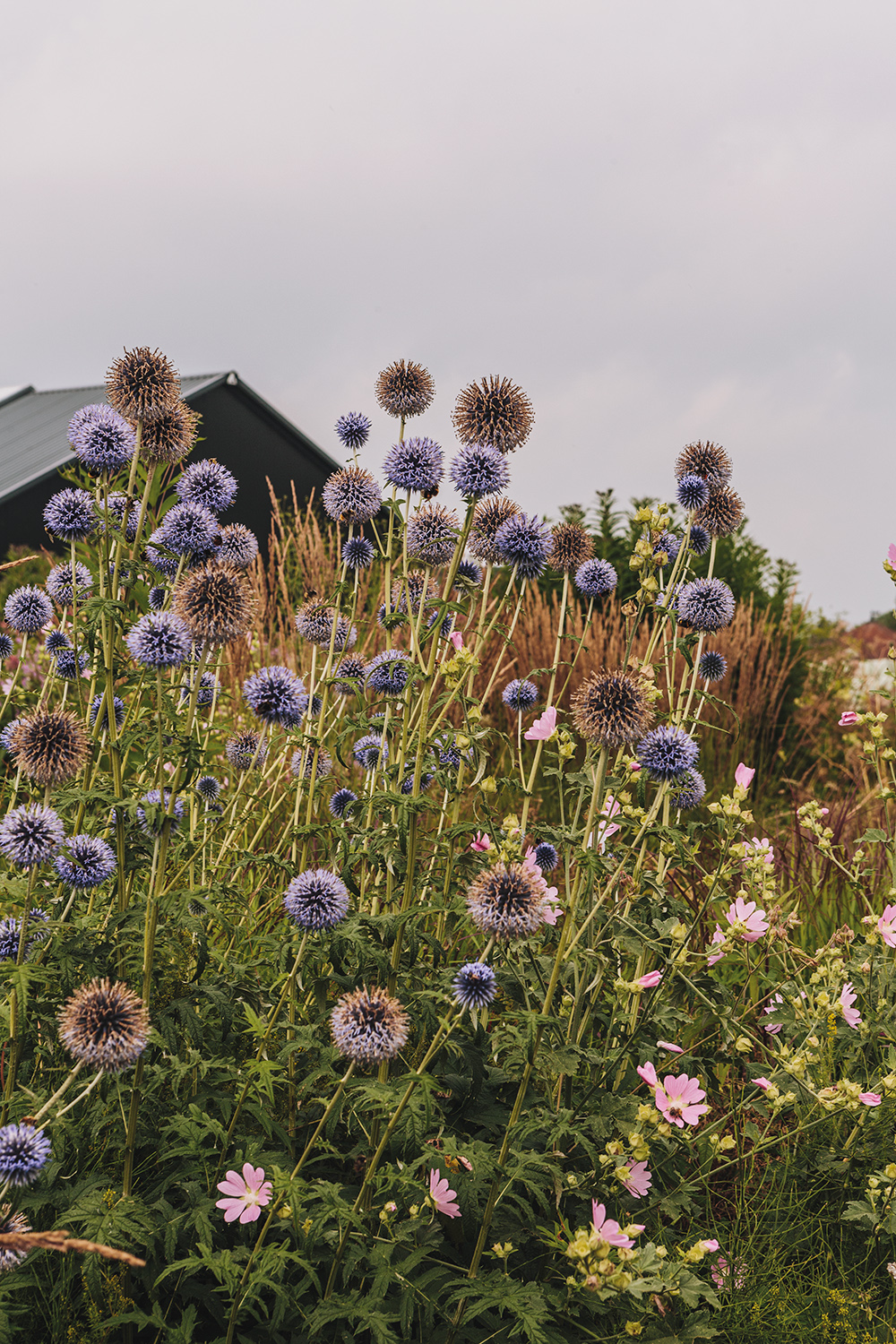
Walking through this garden with Oudolf is an exercise in looking and not knowing where to start. “A garden is always in motion,” he says. “Each season, every week, every day.” In April and May the garden rears up from the shadows, the buds push their way outwards, the colour palette slowly unfolds. In summertime the central plants are in full bloom, as are the grasses with their strong scents. Right now the smell is predominant throughout the garden. Oudolf’s gardens are beautiful after the glory of summer. As colours fade in the autumn, most plants take on rusty hues, and then in winter as the plant remains become skeletons, the gardens are still a pleasure to behold. “Perhaps there is a month during the winter in which the garden is minimal,” says Oudolf. “In January. Then we slowly work our way toward spring.”
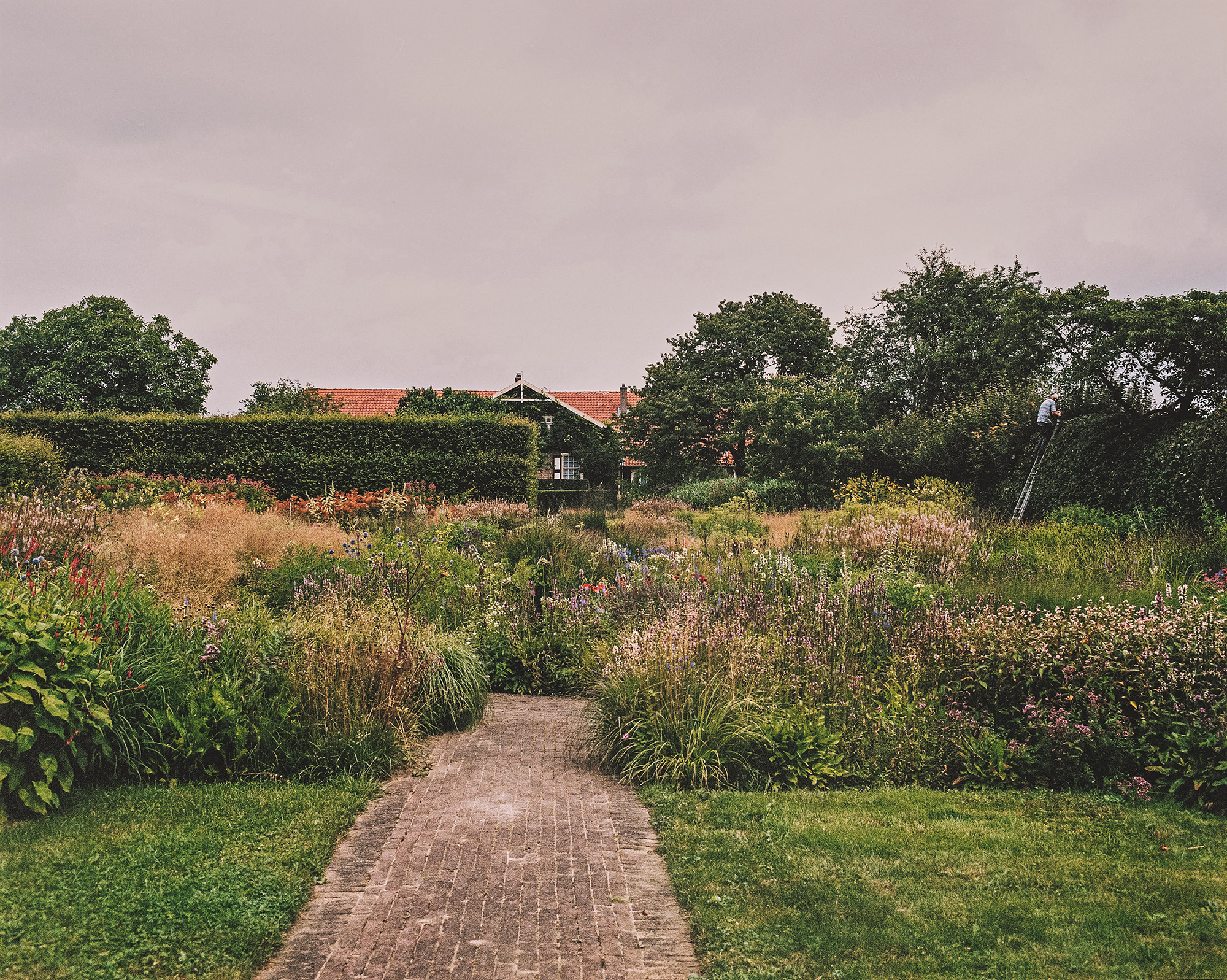
Now and again Oudolf points out something, while we take in all the flowers around us, enjoying his creation in silence. Oudolf and his gardens are our taciturn teachers. A garden is a garden is a garden.



